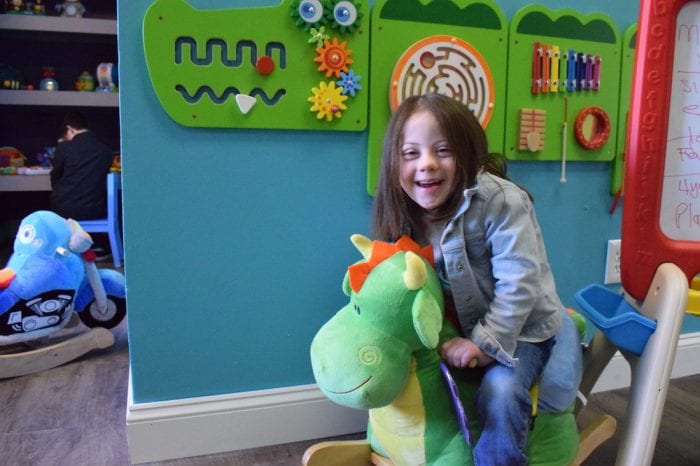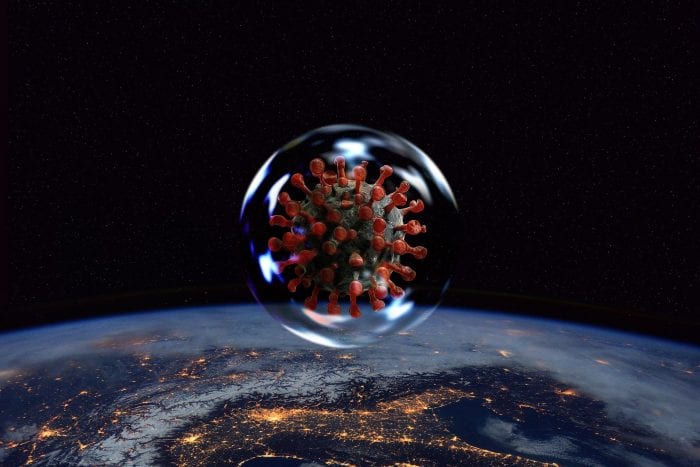Get ready to lose an hour of sleep, but gain an extra hour of daylight! Daylight Saving Time begins at 2 a.m. on Sunday, March 14. That’s when you’ll move your clocks forward by one hour and “spring ahead.” The event is also a good time to change the batteries in your smoke detectors. Daylight Saving Time ends Sunday, Nov. 7 this year when we’ll move our clocks back an hour and lose an hour of daylight.
Radio DJ, LI brewery team up for suicide prevention
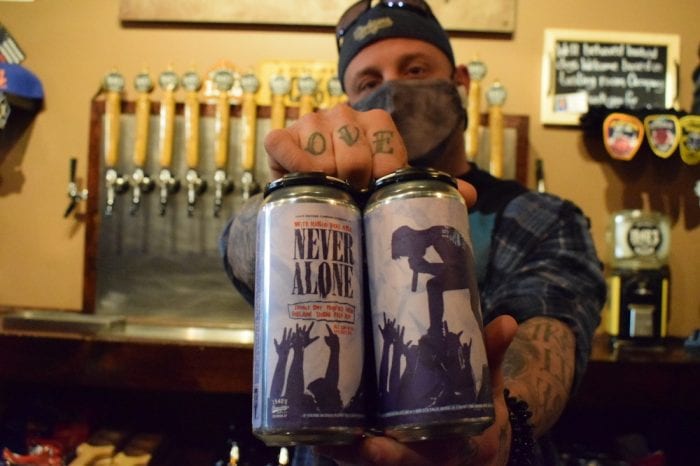
A local radio personality and a brewery owner are combining forces to combat suicide.
Brian Orlando, a DJ with Connoisseur Media’s 94.3 The Shark, has made it his mission to bring awareness to depression and to help those who are struggling.
Back in 2017, when his hero, and Soundgarden front man, Chris Cornell took his own life, Orlando was devastated. He began writing a song hoping to shine a light on the taboo topic of suicide, and to show that music can heal all wounds.

He teamed up with Northport native (and the lead singer of 90s band Wheatus) Brendon B. Brown, Vinnie Dombroski of the band Sponge, Kevin Martin from Candlebox, and One Direction touring drummer Josh Devine to create “Choose Song.”
In January 2019, the group, along with dozens of Long Island locals, filmed its music video at 1940’s Brewing Co. in Holbrook, starring Orlando’s friend, and fellow Shark DJ, Ashley Massaro, of Smithtown.
Massaro lost her own life to suicide a few weeks before the video was set to release.
“We watched it together,” Orlando said. “It was just a couple of weeks before she passed, and I know that she loved the video. She loved being here.” When Massaro passed away, everyone thought it was too soon to release the video online. Eventually, in July 2020, they decided to post it to YouTube, and share her story with the world.
“There isn’t a day that goes by that I don’t think about her,” he said. “I want people to realize that when they do see the video, they’re looking at somebody that fought to the end, even though she had problems, she was trying to help other people. That’s why she was here.”
Massaro rose to fame in 2005 after winning WWE’s Diva Search. Two years later, she was a contestant on “Survivor: China.” In 2016, she was one of several former wrestlers who sued the WWE, alleging they sustained head injuries on set that were not properly cared for, causing her severe depression.
“When people see the video, they realize anybody from any walk of life can suffer from depression,” Orlando said. “And hopefully that’s an inspiration to reach out on that can and get help so you don’t become a statistic.”
The can he mentions is the new beer that 1940’s Brewing Co. crafted this month. Jon Brengel, head brewer and owner, was instrumental in the movement, since the video was first filmed inside his brewery.

Brengel, of Huntington, approached Orlando about creating a beer and a logo that he hopes can save lives.
“As you try to bring people together with music, we tried to do the same thing with beer,” he said. “I thought it’d be really appropriate to have something to support mental health.”
For every sale of the “Never Alone” beer, proceeds will go to suicide prevention. They also added a QR code to the label, which brings customers to the music video’s page, and other information like the National Suicide Hotline.
Brengel said the idea to create a beverage for a cause was thought of in December. By February, they brewed a brand-new citrus New England India IPA (flavored after Orlando’s favorite drink, tequila), and created the symbolic design.
The light blue label features a concert setting, with hands reaching up (to the singer or symbolizing reaching out for help). Crinkled paper decorates the background, symbolizing every note written and never sent. In red ink, it reminds anyone looking, “With music, you are never alone.”
Blending the duo’s love for music, hanging out with friends and having a good time, along with the reminder that help is available for whoever needs it, the craft beer was born.
Brengel said he hopes his beverage will rekindle friendships and bring more people together.
“Living in the world we live in now, not having that contact, and not being able to see people as often as you want, I think the song really is a reminder to reach out to that person you haven’t spoken to in a while,” he said. “We were very cautious of the stigma of alcohol and mental health matters, but I think the idea is that this QR reader and label will be a reminder for you to reach out to the people you miss.”
Orlando said there is always going to be a stigma about drinking, “But the truth of the matter is, breweries like this are just the places to go to and be together — listen to some good music and be with good people.”
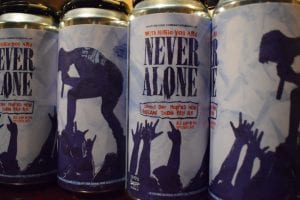
The ultimate goal, he said, is if the person consuming the drink is feeling down or having a bad day, the QR scanner is right there on the lable, and will direct them to an inspirational video, reminding them they are never alone.
Orlando said that since the video’s release, nearly 20,000 people have viewed, shared and commented on it, saying that the song helped save their life.
“That’s what the song is supposed to be there for to help people,” he said.
The Choose Song beer is available at the 1940’s Brewery and at local distributers.
Local families help bring Down syndrome achievement center to Long Island
A group of Long Islanders saw a need for a safe space for people with Down syndrome and, despite COVID-19, they made it happen.
Founded in 2003, GiGi’s Playhouse is an international network of achievement centers, providing free therapeutic and educational programs for people of all ages. This month, the nonprofit’s 52nd location — and Long Island’s first — will open in Patchogue.
But families from across both North and South shores helped bring this safe space to life.

Mike Cirigliano, board president and owner of Cirigliano Agency, said that GiGi’s Playhouse Long Island will help fill a void for families of loved ones with Down syndrome. Over the course of several years, the group tried to find the perfect site, scouting locations across Long Island. They eventually settled on 100 Austin St. (in Patchogue), where they took over three of the four units inside the building.
Located right off Sunrise Highway, he said the spot is easy for families to get to whether they come from Nassau County or the Hamptons.
“There is a true need for this on Long Island,” he said. “This is where people can come — a place where parents who need a place to go with their child can come play, hang out.”
But it’s not just a place to chill. Board member Karyn Degnan said it will offer programs for people with a prenatal diagnosis to those adults with Down syndrome.
“Moms and dads can go to this common place to talk and share their stories,” she said. “They can grow with the center.”
The new facility offers everything from fine motor skills to speech and socialization programs, to tutoring, exercise classes and even a kitchen where young adults can learn how to cook.
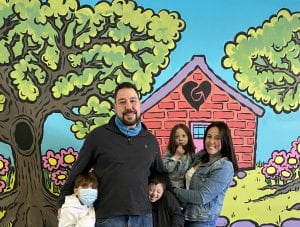
Degnan, a Centereach mom of three, said two of her children have Down syndrome: Sal, who’s 11 and daughter Ryan, who’s 5.
“As my kids grow, they have a teen center there — a place where people can go as they grow into their young adulthood life,” she said. “It’s a place where they can feel like they belong.”
Cirigliano said that although the fundraising aspect and search for a spot has been years in the making, they officially signed the lease in early February. Over the last month, the group of 50-plus volunteers helped turn the office spaces into a vibrant, exciting place.
“What’s really cool is I brought my kids with me so they can see the before and after,” Degnan added. “After we were done with the construction, I could feel their positive energy and their love for it. When they were able to witness it being all done, there was this happiness that was beaming from them.”
She said her 11-year-old can’t wait to hang out there with his friends.

One of those friends is Derek DeProspo, an 8-year-old from Selden who also has Down syndrome. His grandmother, Elizabeth Rahne of Selden, is GiGi’s new program director.
“It’s an incredible organization and has incredible mission,” she said. “It’s giving parents and families the support they need to help their children become the best they can be.”
Rahne said groups like the ones at GiGi’s Playhouse are important for new parents.
“It’s an overwhelming diagnosis,” she said. “You don’t know how much they’re going to progress or what they’ll able to accomplish.”
But Derek runs and plays with the kids inside the center — an inclusive space where kids who are neurotypical, on the autism spectrum or who have Down syndrome can play, dance, create and socialize with no judgment or fear.
“I’m so proud of what he’s able to do now,” she said. “I think people need to hear the story that our children do have some difficulties, but they can accomplish so much more than people think. We need to celebrate their uniqueness.”
Angelique Sternberger, of Port Jefferson Station, lost her 3-year-old son, DJ, eight years ago.
“When DJ was born, the doctors came to us and told us he had Down syndrome,” she said. “They always focus on the worst things possible, but it’s all about what these children can do.”
She joined GiGi’s Playhouse in 2017 in memory of him and is now the board secretary.

“It’s helpful to have a place where you can go if you need some assistance,” she said. “I wish I had a GiGi’s Playhouse when DJ was born.”
This April, DJ would be turning 12 and, looking back, Sternberger thinks he would be thrilled to know what his mom has helped accomplish.“I’m sure he would love it here,” she said. “He was such a social child … he was the mayor of his school, and he would love being able to interact with other kids.”
Run solely on donations and fundraisers, GiGi’s Playhouse is 99% volunteer based. The only paid employee is the site manager, who opens and closes every day.
Cirigliano said that people who want to donate can do so online at gigisplayhouse.org. He said that they will be highlighting donors on their front door every month to say “thank you” for making this all possible.
And the opening comes at a special time for the Down syndrome community: March 21 is World Down Syndrome Day, and the Long Island chapter of GiGi’s Playhouse is officially opening its doors one day before. From 10 a.m. until 10:30 a.m. on March 20, a virtual grand opening will be streamed through Facebook and online.
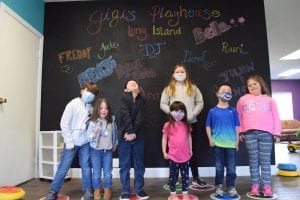
Due to COVID-19, families who want to start using the achievement center’s services must schedule an appointment online.
“Children with Down syndrome like to follow their peers,” Sternberger said. “We want them to be able to socialize. So, come to GiGi’s and we’ll be there with open arms.”
GiGi’s Playhouse will be open Tuesdays through Saturdays. To view the hours of operation, visit gigisplayhouse.org/longisland.
D. None of the Above: Self doubt, self loathing and the 2004 Red Sox make my cancel list
By Daniel Dunaief

I would like to cancel some things from my past and my own life. Here are some things I’d put on my cancel list:
Self doubt: Movies (remember when we used to go out to movies, pay way too much money for popcorn, candy and enjoy previews for upcoming films that looked better than the one we were about to watch?) often encourage us to overcome self doubt. What if we never had those doubts in the first place? We might become arrogant and insufferable, but we also might truly become our own versions of “The Little Engine that Could.” Wait, that hasn’t been canceled, has it? Well, if it has, I’m going to ignore the latest cultural eraser.
Self stuffing: When self doubt crept into our minds, how often did we reach for the kind of comfort food that just didn’t do us any favors? Sure, those cupcakes, cookies and sugar cereal might have tasted good in the moment, but was the momentary satisfaction really worth it? Did the eight vitamins and four minerals do us any good? Let’s cancel that urge and impulse, making it impossible to continue unfortunate patterns.
Self loathing: I admit that the self loathing that has crept in at times in my life has helped me get off the couch and do some sit-ups and push-ups, has driven me to be more productive and has put me on more of the “right track,” to borrow from that Little Engine. Still, maybe all that energy would have been more effective if I used it earlier.
The 2004 Red Sox: Yeah, I know you can’t cancel a team or sports history, but that would be one of the first teams I’d erase from my memory. The Yankees were winning 3-0 in the series and no team had ever come back from such a deficit, plus we had the curse of the Bambino. None of that mattered, as the Sawx not only took the next four games, but then went on to win the World Series. Blech! Now I know how all those New Englanders felt about Bucky Dent, which probably stings a lot less. Bucky Dent is like trying to tease your younger brother with something that makes him smile even more broadly than you do.
Mirrors: We should cancel mirrors. After all, they keep showing how much older and more exhausted we’re getting. Sometimes, like when we conquer the self stuffing and the self doubt, we see the version of ourselves we’d like to be. Other times, though, the mirror tells us, albeit in a backwards way, that we aren’t who we’d like to be and that we need to climb back onto that train car to get to our desired destination.
Report cards: Students, parents and teachers can’t win. If a teacher gives everyone A’s, the teacher will be popular, but the students probably wouldn’t learn as much as they could or should. The teacher who has more of a bell-shaped distribution of grades may reflect the reality of the class as a whole, but he or she may put someone who belongs on the right side of the curve on the left and vice versa. Let’s cancel report cards and let the students prove what they know in some other way. The great thing about this version of cancel culture is that it doesn’t require me to replace it with something that works.
Bad parenting: We’ve had moments when we have the right intention, but the wrong result. Let’s cancel those unfortunate parenting errors. If kids can get a do-over on the playground, we should get to cancel one or two of our mistakes.
Harborfields Tornadoes blow out Shoreham-Wading River Wildcats

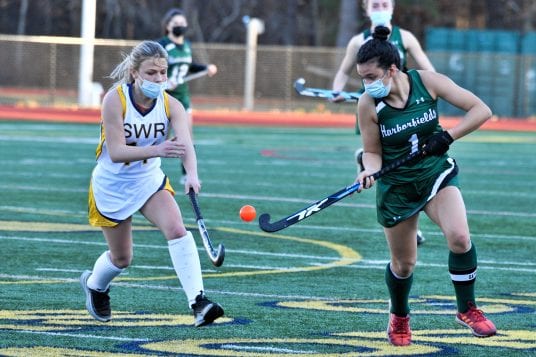




The Wildcats of Shoreham-Wading River had all they could handle when visiting Harborfields Tornadoes blew the game wide open early, scoring six unanswered goals in a Division II matchup Mar. 9.
The Wildcats averted the shutout when Brooke Meltcher’s shot found its mark with 5:14 left in the third quarter. Harborfields flushed their bench spelling their starters and rocked the box once more early in the fourth quarter to take a 7-1 victory.
For both teams it was their season opener that was met with a few spectators in the stands in this COVID-19 compressed season.
Jordan Conversano led the way for the Tornadoes scoring twice with teammates Marina Bergin, Jenelle Bennardo, Amanda Quenneville, Carolena Purpura and Emma Flynn who each scored one goal apiece.
Kelsey Burke had a busy day in the box for the Wildcats with 15 saves.
Pictured clockwise from above, the Tornadoes celebrate after a goal against Shoreham-Wading River; Harborfields’ Purpura air dribbles past Abigal Sisler; Flynn battles Shoreham-Wading River’s Sisler; and Quenneville with a clearing shot against Shoreham-Wading River.
Between You and Me: Vaccinated against COVID-19! Now what can and can’t we do?
By Leah S. Dunaief

The second time around, of course, I knew the routine: where to drive, what paperwork to fill out, how quickly the shot would be administered into my designated vaccine arm, my left, then how I would have to wait in case of an immediate reaction. After the allotted 15 minutes, there being none, I left and drove myself home, picking up a sandwich for supper at the deli along the way.
Shortly after I finished eating and got up from the table, however, I started to feel a bit lightheaded. By the time I had cleaned everything up, I was decidedly dizzy. I climbed the stairs to the bedroom, got into pajamas and, book in hand, tucked myself safely into bed. After a couple of hours, when my inoculation site began to hurt, I took two Tylenol and ultimately fell asleep.
The next morning, Sunday, the dizziness had stopped and I was wolfishly hungry. Thinking that was a good sign, I hurried out of bed only to realize that my left upper arm seriously ached, and upon inspection, was red, hot and swollen. It remained that way throughout the day and the next, until it finally dawned on me to apply ice to the area. Almost immediately the swelling was reduced. Otherwise, except for a slight and short-lived headache, the kind one might get when coming down with a cold, I had no further difficulties.
Now that I have had both vaccines, what does that mean?
First, it means that I have to wait 14 days before the full preventive effect of the vaccines take effect. Then, and only then, a curtain will lift and I will be able to walk out into the sunshine. At least, that is how I would like to think of my life changing two weeks from now. But not completely, I have learned. Yes, I will be able to socialize in small groups in homes with others who have also been twice inoculated. That means friends around my age. We will not have to wear masks nor remain socially distanced. Hallelujah!
I will also be able to meet with my unvaccinated family in single family units at a time — son, daughter-in-law and their children — if they have been living together the whole time and are basically healthy. According to CDC guidelines, this can happen in a home and without requiring masks or our standing six feet apart. The very thought of hugging them makes me dizzy again, this time with pleasure.
In public places, however, we should continue with the same precautions of masks, social distancing and frequent hand washing, as well as avoiding poorly ventilated spots. Scientists do not yet understand if we can still carry and inadvertently transmit the virus. Also they don’t know exactly how well or for how long the vaccines protect against the disease. There are, as we know, ongoing multiple mutations by the virus, some of them more contagious and more virulent than the originals, and scientists are not sure how well vaccines will protect against those variants.
Meanwhile, we who are vaccinated need not get tested or quarantine if we are exposed to the virus, unless of course, we come down with symptoms. We are advised not to gather with unvaccinated people from more than one household and should avoid joining medium or larger groups.
Further, we are still advised not to travel long distances and to stay home if possible until more facts are known. This is disappointing, but travel brings exposure to more people and the possible spread of variants. Every time there is more travel, there is a surge of cases, the experts point out. If we go to a gym or restaurant, the risk is lower, but we should still be aware and take the usual precautions, like wearing a mask on the treadmill or while waiting for a meal.
So we are returning to normal life but slowly and with great care.
Local indoor recreation centers reopen
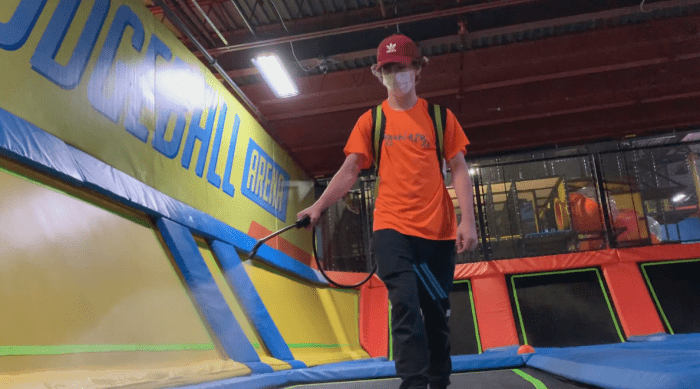
By Kimberly Brown
Gov. Andrew Cuomo (D) announced beginning March 26, indoor family entertainment centers will be able to reopen at 25% capacity.
Other facilities such as bowling alleys and escape rooms have been open since last August, but indoor family entertainment centers are among the industries that have been left behind during the reopening plan. As a result, they have taken a big hit since the start of the pandemic last March.
A few Long Island entertainment centers such as Urban Air Adventure Park in Lake Grove and Sky Zone Trampoline Park in Mount Sinai are “excited, eager, thrilled, delighted” to make a comeback this year.
“We tried as a business to get engagement from New York State about the reopen plan for family entertainment,” said David Wolmetz, co-owner of Urban Air. “Meanwhile these other businesses like bowling alleys, gymnastics, casinos, gyms and other indoor recreation centers were able to reopen and we were questioning why the data was not allowing for our business to open.”
Unable to receive the data from the state to support the lack of focus on indoor family entertainment centers, he was able to obtain his own data from other Urban Air parks that were allowed to reopen around the country.
Observing approximately 140 different Urban Air parks, Wolmetz found that out of the 4 million guests who have been served, no cases of COVID-19 were traced back to their parks.
“It was very tough for us to understand why we couldn’t reopen, but we remained patient,” he said. “We are doing everything possible to remain safe, and are pleased we will be able to open March 26 and serve the community again.”
Despite how tough the year has been for such companies and keeping in mind that only 25% capacity will be permitted on reopening shortly, Dominick Crafa, Sky Zone general manager, said he is still looking forward to welcoming back families into the park again.
“We want to allow people to have fun again, and try to get back to somewhat of a normal,” he said, “We’ll probably be running in the red for a little bit and losing some money, but just the fact that we’re able to get back to some sort of normal life and provide a place of happiness is something we’re excited for.”
Editorial: Women in journalism
It’s pretty funny. Journalism was always known as a male-dominated field.
Back in the day, women were mostly secretaries in the field — a select few would end up publishing their own works like the famous Nellie Bly.
But even so, thanks to the brave and loud people who fought for women’s rights all those years ago, we’re allowed to do what we do.
In celebration of Women’s History Month this March, we thank them, from the bottom of our hearts.
Now it’s 2021 and a lot has changed since Bly took a trip around the world in 72 days and uncovered the horrors of mental institutions in the late 1880s.
TBR News Media currently staffs primarily women — its three editors are all female. We’ve had men work here before, but it just happened to work out that the majority of employees are now female.
Although the world has given our gender more rights than before, it’s still tough out there for women in journalism — between community to national levels, broadcast, radio, print and the web.
Our colleagues have been harassed on the street, cat called, grabbed. Some of us have been victim blamed or spoken to in a condescending way. Some of us in journalism don’t earn as much as our male counterparts — even on Long Island (yes, equal pay still does not exist).
But yet, women are still out there talking to you, telling your stories, being as empathetic as we can be when interviewing, photographing, taking videos and writing an article.
We have a lot to be thankful for, but there still needs to be change.
We need to be paid properly for what we do. We need to be thanked for the work we do. We need respect — and not to be grabbed or harassed while we do our jobs. This applies not only to us but all the women out there who are doing their best to feed their families, achieve their goals and to make their mark on the world.
Huntington Hospital infectious disease expert discusses latest COVID news
Adrian Popp, chair of Infection Control at Huntington Hospital/ Northwell Health and associate professor of Medicine at Hofstra School of Medicine, spoke with TBR News Media newspapers to discuss vaccinations and COVID-19. Please find below an abridged and edited version of the discussion.
TBR: Why do some people have a stronger reaction to a second shot?
POPP: These two vaccines are very well tolerated. Yes, there are some side effects after getting the shots. Indeed, even in the trials, it has been shown that the second shot is sometimes more prone to have side effects. There is pain, tenderness at the site of the shot. Sometimes people can get fatigue, fever and even a chill. It is rare to have something more severe than that … From my experience, most people tolerate them well, including the second shot.
TBR: Should people try to take at least a day off, if they can, after the second shot?
POPP: That is not necessarily unreasonable. A lot of my colleagues did take the shot later in the afternoon and then go home and rest for the evening. If you can afford to have a day off the next day, that’s probably not unreasonable.
TBR: Does having the vaccine free people up to interact with others?
POPP: What we know from the Moderna and Pfizer trials is that the effectiveness of the vaccination is 95 percent to prevent symptomatic disease … Can a vaccinated person develop a light form [of the disease]? In theory, yes. There are not completely safe in [not] transmitting the disease to someone else.
TBR: Have the Black and brown communities, which have been somewhat resistant to taking the vaccine, been included in the clinical studies?
POPP: Those studies with Pfizer and Moderna included these populations. They are well represented in these studies. There’s no significant difference in the side effects in African Americans, or less efficacy in the Black and brown communities …. [The Black and brown communities] should feel comfortable that it’s as safe or as efficacious as it is in a Caucasian person.
TBR: Have people from the Huntington Hospital or Northwell community asked you about the safety of taking the vaccine?
POPP: I do have conversations like this every day with different members of Huntington Hospital [as well as] the community at large … I bring up one very recent study that will probably help in kind of showing a few things. I’m going to bring in Israel, a smaller country with a centralized health care system that has been very good in vaccinating people …. More than 50 percent of their population has received the COVID vaccination. Specifically, the senior population, 65 and above, has received the vaccine in percentages even higher … In a study in the New England Journal of Medicine of more than 600,000 people who received the vaccine, [they] compared the incidence of COVID without the vaccine. They found the protection is more than 90 percent … That tells us the vaccine is very effective.
TBR: What do you hear about the Johnson & Johnson vaccine?
POPP: The best thing about the [J&J] vaccine is that it’s only one shot and the second thing is that it can be stored at normal temperature compared to the other vaccinations [which require deep freezing] … That allows it to be distributed more easily … It will probably be a good vaccine as well.
TBR: After the shots, what is the immunity?
POPP: After the first shot, approximately a week or two weeks after the first shot, you develop quite a significant level of antibodies. There is a certain amount of protection. With the second shot, the level of antibodies shoots up probably 10 times higher than after the initial shot … Full immunity is one week after you receive the second shot.
TBR: Some reports suggest that people who have COVID and develop antibodies may only need one shot. Is that true?
POPP: There are infectious disease experts looking into this. We do know that after getting COVID, you do develop a certain level of antibodies … That varies widely from person to person … The jury is still out on this one. Truly, we have to look at it in a more scientific way. We’ll find out if this will be an option down the road. At this point, as the recommendation stands, you do have to get both shots, even if you had COVID disease before.
TBR: Do we know more about why one person gets very sick and another has only mild symptoms?
POPP: Up to 50 percent of people who get COVID are either asymptomatic or have really minor symptoms. There are risk factors for developing a serious disease. We know that obesity, hypertension, diabetes and specifically certain immunocompromised conditions are risk factors for more serious disease. I have seen older people in their 90s who do have a mild form of the disease, then I’ve seen somebody in his 40s who has very severe disease … There is no real good way of saying who will develop a more severe disease versus somebody else who will have a milder form.
TBR: What about the aftereffects of COVID?
POPP: I have seen quite a few cases of people who … develop quite severe symptoms. On the milder end, people have a loss of taste and smell. This can last for some time … From my experience, most people will recover from this. On the other hand, people with more severe illness, people who get hospitalized, I have to say that the virus can take a significant toll on that person. I have seen patients who have lost 20 to 40 pounds over a period of a month or a month and a half … Recovering from such a hit of being sick for such a prolonged period of time takes a toll on people. Some patients also develop some degree of cognitive impairment.
TBR: What keeps you up at night?
POPP: Even though [the infection rate] is coming down in New York, it is still not insignificant. It’s still an issue. Until we get … a significant number of our population vaccinated, we’re still going to be in trouble … The only way we can stop the whole thing is by vaccinating as many people as we can.
SBU scientist finds nitrogen filter also reduces possible carcinogen

Water, water everywhere and several scientists want to make sure there are plenty of drops to drink.
Christopher Gobler, director of the New York State Center for Clean Water Technology, and Arjun Venkatesan, the CCWT’s associate director for Drinking Water Initiatives, recently published two studies in which they highlighted how their efforts to reduce nitrogen also cut back on 1,4 dioxane, a likely carcinogen.
Gobler, who is also endowed chair of Coastal Ecology and Conservation at Stony Brook University’s School of Marine and Atmospheric Sciences, is leading a center whose mission is to solve the nitrogen overloading crisis in Long Island’s groundwater and surface water by developing alternative onsite septic systems.
Nitrogen, which comes from a host of sources including fertilizer, creates the kind of conditions that lead to algal blooms, which can and have closed beaches around Long Island. Nitrogen also harms seagrass meadows and can cause the collapse of shellfisheries like clams and scallops.
In the meantime, 1,4 dioxane, which is a potential health threat in Suffolk and Nassau counties, comes from household products ranging from shampoos to cleaning products and detergents. Manufacturing on Long Island in prior decades contributed to the increase in its prevalence in water sources.
Indeed, recent studies from the center showed “very high levels of 1,4 dioxane have been detected in our groundwater,” Venkatesan said in a recent press conference.
The chemical doesn’t easily degrade, conventional wastewater treatment doesn’t remote it, and household and personal care products contribute to its prevalence in the area.
A one-year study “confirmed this suspicion,” Venkatesan said. “The level of 1,4 dioxane in a septic effluent is, on average, 10 times higher than tap water levels.”
This finding is “important” and suggests that the use of these products can ultimately end up polluting groundwater, Venkatesan continued.
At the same time, the increasing population on Long Island has contributed to a rise in the concentration of nitrogen in groundwater, Gobler added during the press conference.
The center hoped to create a septic-enhancing system that met a 10, 20, 30 criteria.
They wanted to reduce the concentration of nitrogen to below 10 milligrams per liter, the cost to below $20,000 to install and the lifespan of the system to 30 years.
The center developed nitrogen removing biofilters, or NRBs.
In a second paper, the researchers showed that the NRBs removed 80 to 90 percent of nitrogen.
At the same time, the NRBs are removing nearly 60 percent of 1,4 dioxane, driving the concentration down to levels that are at, or below, the concentration in tap water, which is 1 part per billion.
This is the “first published study to demonstrate a significant removal of 1,4 dioxane,” Gobler said at the press conference. NRBs have advanced “to the piloting stage.”
The center anticipates that the NRBs could be available for widespread installation throughout Suffolk County by June 2022.
The center currently has 20 NRBs in the ground and will have over 25 by the end of the year. In 2022, anyone should be able to install them, Gobler said.
Residents interested in NRBs can contact the center, which is “working toward being prepared for widespread installation,” Gobler explained in an email.
Residents interested in learning what financial assistance they might receive for a septic improvement program can find information at the website www.reclaimourwater.info.
Gobler said the microbes in the NRBs do the work of removing nitrogen and 1,4 dioxane, which continually reside within the filters. He explained that they should continue to be functional for decades.
Adrienne Esposito, executive director of Citizens Campaign for the Environment, which has offices in five locations and is committed to an environmental agenda, was pleased with the research Gobler and Venkatesan presented.
She was “beyond thrilled with the science released today,” she said during the press conference. This research on the effectiveness of the NRBs “validates all of the work going on for the last four years.”
Esposito urged the state’s Department of Environmental Conservation to test wastewater from laundromats, car washes and other sources to determine the amount of 1,4 dioxane that enters into groundwater and surface water systems.
Esposito is “thankful for science-based work that allows us to attain clean water.”



